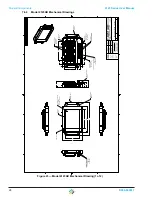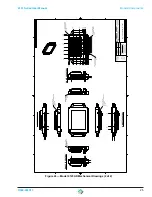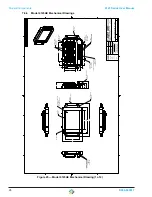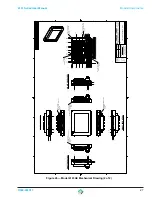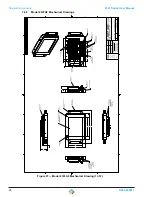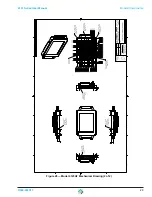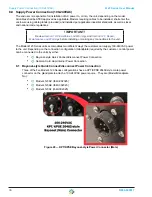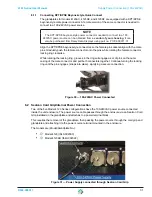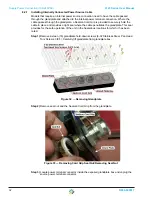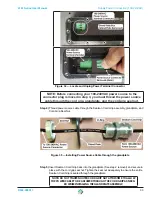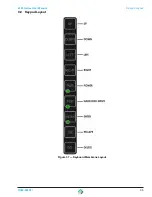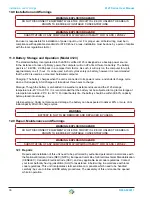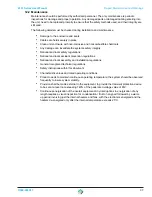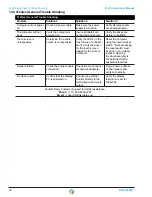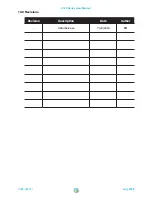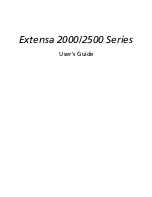
36
D004-000017
Installation and Warnings
4123 Series User Manual
10.0
Installation and Warnings
WARNING: EXPLOSION HAZARD
DO NOT DISCONNECT EQUIPMENT WHILE THE CIRCUIT IS LIVE OR UNLESS THE AREA IS
KNOWN TO BE FREE OF IGNITABLE CONCENTRATIONS.
WARNING: EXPLOSION HAZARD
SUBSTITUTION OF ANY COMPONENT MAY IMPAIR SUITABILITY FOR CLASS I, ZONE 2.
End user is responsible for installation of power input to unit. For proper use, all field wiring must be in
compliance with applicable standards for ATEX Zone 2 areas. Installation must be done by a person familiar
with the local regulations (AHJ.)
11.0
Battery Storage and Operation (Model 4123)
The standard battery incorporated into the ATEX certified 4123 is designed as a backup power source.
In the instance of a loss of primary power, the computer will run off of its Lithium-Ion battery. The battery
pack is a 14.4VDC, 2.9 Ah pack in a compact form factor. As such, it will only run the computer for up to
approximately one (1) hour. It can be used in short cycles solely on battery, however it is recommended
that the 4123 is used as a mounted, hardwired computer.
Charging: The battery charges when the unit is connected to its power source, and ends its charge cycle
when at full capacity. A full charge will take about three hours to charge.
Storage: Though the battery is embedded in a weather resistant enclosure and the 4123 storage
temperature is -20°C to +55°C, it is recommended that the battery not be subjected to long term storage at
a temperature outside -20°C to +60°C. For ideal battery life, the battery should be within 30-50% capacity
before placed into storage.
Life Expectancy: Under normal use and storage, the battery can be expected to deliver 80% or more of its
initial capacity after 300 charge cycles.
WARNING
BATTERY IS NOT TO BE REMOVED AND REPLACED BY USERS
12.0
Repair, Maintenance and Warnings
WARNING: EXPLOSION HAZARD
DO NOT DISCONNECT EQUIPMENT WHILE THE CIRCUIT IS LIVE OR UNLESS THE AREA IS
KNOWN TO BE FREE OF IGNITABLE CONCENTRATIONS.
WARNING: EXPLOSION HAZARD
SUBSTITUTION OF ANY COMPONENT MAY IMPAIR SUITABILITY FOR CLASS I, ZONE 2.
12.1
Repairs
Repairs and installation of this unit need to be performed by authorized personnel in accordance with
the National Electrical Code (NEC) (NFPA), European Committee for Electrotechnical Standardization
(CENELEC), Canadian Electrical Code (CEC), and any applicable local code regulations. Contact
your local Authority having jurisdiction (AHJ) for assistance in field wiring in accordance with local
code regulations. This unit incorporates static sensitive com ponents which need to be handled
carefully; be sure to follow all ESD safety procedures. The assembly of this unit cannot be opened
while in operation.



